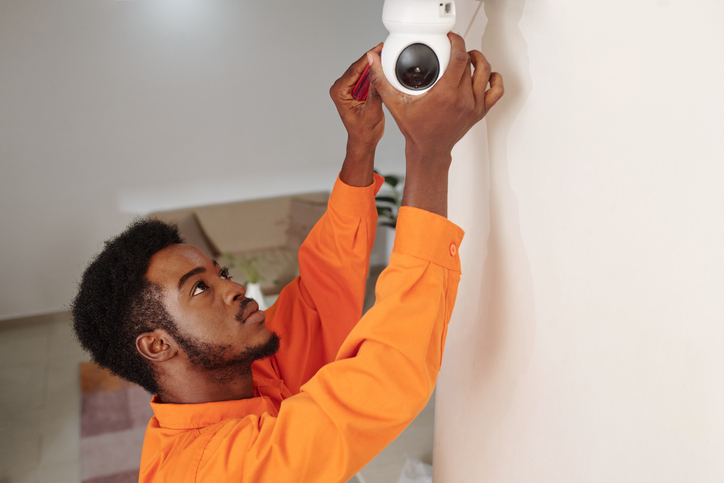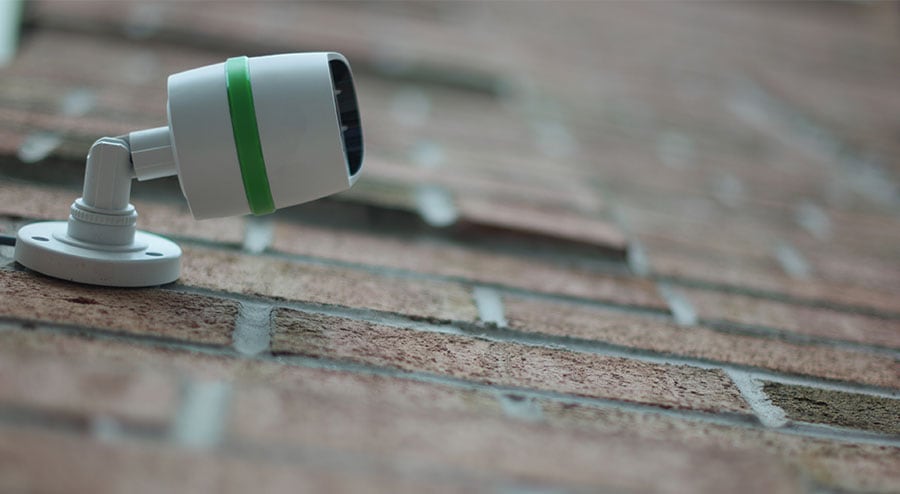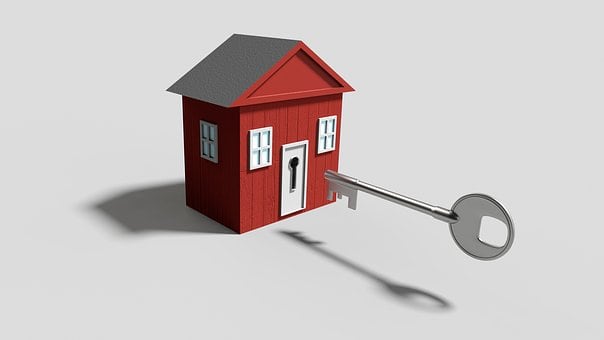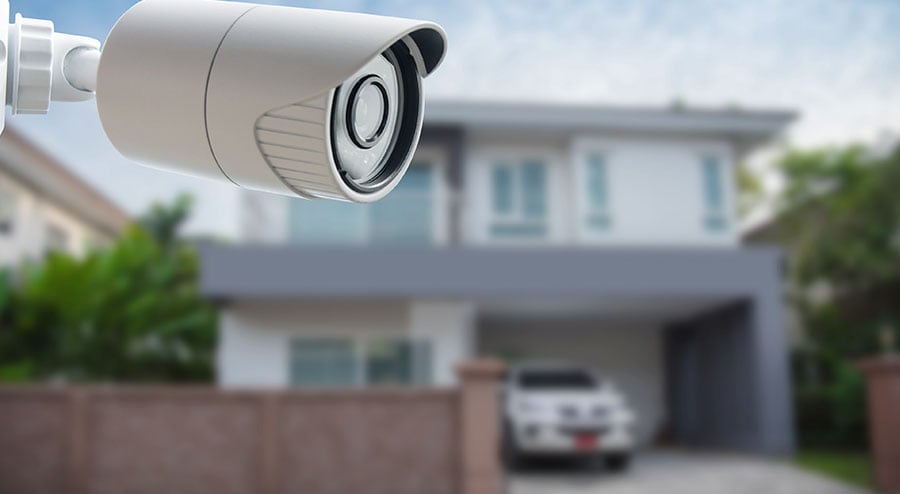Home security is a paramount concern for homeowners, as the need to protect our properties and loved ones continues to grow in an increasingly uncertain world. Traditional home security systems once considered a luxury, have now become an essential aspect of modern living. However, a notable shift in recent years has been the rising trend of do-it-yourself (DIY) home security installation.

In the past, professional installation was the norm, with homeowners relying on security companies to handle the intricate process. But with advancements in technology and the availability of user-friendly security systems, many individuals are now opting to take matters into their own hands and install their own security systems.
Table of Contents
- Understanding the Basics of Home Security Systems
- Evaluating Your Needs for the Best Security System
- Before the Installation: Preparations and Precautions
- Step-by-Step Installation Guide
- Integration and Remote Monitoring
- Post-Installation: Maintenance and Troubleshooting
- Dealing with Insurers and Home Security Systems
- Conclusion
Understanding the Basics of Home Security Systems
A home security system is a comprehensive network of devices and components designed to protect your home and its occupants from various threats, including burglaries, vandalism, fire, and other emergencies. These systems can be customized based on individual needs and typically consist of several key elements:
- Alarms – Audible alerts that notify homeowners and deter intruders when triggered.
- Cameras: Surveillance devices that capture and record video footage of your property.
- Motion Detectors – Sensors that detect movement and trigger alarms or activate cameras.
- Window and Door Sensors- Magnetic sensors that detect if windows or doors are opened or tampered with.
- Control Panel – Centralized hub to manage and monitor the security system.
There are two main different types of home security systems available in the market, wired and wireless. Wired systems use physical wiring to connect the various components, requiring professional installation and potentially more complex setup. However, wired systems are known for their reliability and robustness. Wireless systems utilize wireless technology to connect the devices, making them easier to install without professional assistance. Wireless systems offer flexibility in terms of placement and can be integrated with other smart home devices.
Benefits of Self-Installed Security Systems
Self-installed security systems offer several advantages for homeowners who prefer a hands-on approach:
- Cost Savings – DIY installation eliminates the need for professional installation fees, resulting in potential cost savings.
- Customization – Installing your own security system allows you to customize it according to your specific needs and preferences.
- Flexibility – With self-installation, you have the flexibility to choose the components, expand the system as needed, and easily relocate it if you move to a new home.
- Learning Opportunity – Installing a security system yourself provides an opportunity to learn about the technology and gain a better understanding of how the system functions.
Legal Implications and Considerations
Before embarking on a DIY security system installation, it’s essential to consider the legal implications and adhere to local regulations; permits, privacy laws, and wiretapping laws.
Some jurisdictions may require permits for installing security systems, especially if they involve outdoor cameras or audio recording. Check with your local authorities to ensure compliance. Be mindful of privacy laws when installing cameras or recording devices, especially in areas where privacy is expected, such as bathrooms or bedrooms. Respect your neighbors’ privacy by aiming cameras only at your property. In some regions, it is illegal to record audio without consent. Understand the wiretapping laws in your area and ensure compliance.
By understanding the basics of home security systems, their types, the benefits of self-installation, and the legal considerations involved, you’ll be better equipped to make informed decisions when setting up your own security system.
Evaluating Your Needs for the Best Security System
Before choosing a security system for self-installation, it’s crucial to evaluate your specific needs and requirements. Consider the size and layout of your home, the level of security you desire, and any specific features you prioritize.
Ask yourself questions like:
- Do you need outdoor surveillance cameras to monitor the perimeter of your property?
- Are you looking for a system with advanced features such as facial recognition or two-way audio?
- Do you require integration with other smart home devices for seamless automation?
By assessing your needs, you can narrow down the options and choose a security system that aligns with your specific requirements.
Wired vs. Wireless Systems for DIY Installation
When it comes to self-installation, you have the choice between wired and wireless security systems. Each option has its own advantages and considerations:
- Wired Systems – Wired security systems, such as the popular Ring Alarm, require physical connections between the devices and the control panel. While they may involve more complex installation, wired systems offer a reliable and stable connection, making them suitable for larger homes or areas with weak wireless signals.
- Wireless Systems – Wireless security systems, like the SimpliSafe Home Security System, utilize wireless communication between devices, eliminating the need for extensive wiring. They are generally easier to install and provide more flexibility in terms of device placement. Wireless systems are ideal for smaller homes or for those who prefer a more straightforward installation process.
Consider your home’s structure, your technical abilities, and the level of convenience you desire when deciding between wired and wireless systems.
Recommended Brands for DIY Security Systems
Several reputable brands offer DIY security systems that are well-suited for self-installation. Here are our recommended brands:
Ring
Ring is well-known for its comprehensive security products and user-friendly installation process. Their range includes popular doorbell cameras like the Ring Video Doorbell Pro ($249.99), versatile indoor/outdoor cameras such as the Ring Stick Up Cam ($99.99), and comprehensive alarm systems like the Ring Alarm Security Kit (starting from $199.00). Ring products are recognized for their seamless integration with other Ring devices and services.
SimpliSafe
SimpliSafe provides wireless security systems designed with simplicity and customization in mind. Their offerings include the SimpliSafe 8-Piece Home Security System (starting from $229.99) and various additional components. SimpliSafe’s systems are known for their easy installation process and compatibility with optional professional monitoring services, offering flexibility to suit individual needs.
Arlo
Arlo specializes in wireless security cameras that deliver high-definition video quality and hassle-free installation. Their product lineup includes indoor cameras like the Arlo Pro 4 ($199.99) and outdoor cameras like the Arlo Ultra 2 ($299.99). Arlo cameras are known for their versatility, durability, and compatibility with popular smart home platforms.
Remember to research and compare the features, pricing, and customer reviews of different brands to find the one that best suits your needs and preferences.
Types of Security Systems Easier for Self-Installation
Certain types of security systems are particularly well-suited for self-installation, allowing for a smoother and more straightforward setup process. Consider the following options:
All-in-One Security Kits
These kits, such as the Nest Secure system, come with pre-packaged components that are designed to work seamlessly together. They typically include a control panel, door/window sensors, and motion detectors, making installation more user-friendly.
Wireless Camera Systems
Wireless camera systems, like the Blink XT2, consist of wire-free cameras that can be placed indoors or outdoors. These systems typically utilize batteries or rechargeable power sources, eliminating the need for complex wiring and simplifying the installation process.
By opting for these types of security systems, you can minimize the technical complexities associated with installation and ensure a smoother DIY experience.
When selecting a security system for self-installation, carefully consider your needs, compare wired and wireless options, explore recommended brands like Ring, SimpliSafe, and Arlo, and choose a system that aligns with your technical abilities and preferences.
Before the Installation: Preparations and Precautions
Before diving into the installation process of your self-installed security system, it’s essential to make necessary preparations and take certain precautions. Here are some key aspects to consider:
Necessary Tools for Installation
To ensure a smooth installation, you’ll need a set of essential tools. These may include:
- Screwdrivers (both flathead and Phillips) for mounting devices and opening panels.
- Wire cutters/strippers for working with cables, if applicable.
- Power drill and bits for drilling holes or mounting brackets.
- Level for ensuring proper alignment of cameras or sensors.
- Tape measure for accurate measurements.
- Ladder or step stool for reaching higher areas, if needed.
- Cable ties or clips for managing and organizing wires.
Having these tools readily available before you begin the installation process will save you time and frustration.
Planning the Layout for Your Security System
Planning the layout of your security system is crucial for optimizing its effectiveness. Consider the following tips:
- Identify vulnerable areas – Assess your property to determine the areas that require surveillance, such as entrances, windows, or blind spots.
- Camera placement – Strategically position cameras to cover critical areas, ensuring clear views without obstructions. Aim cameras at entry points and high-traffic areas.
- Sensor and alarm placement – Install sensors on doors and windows, as well as motion detectors in areas where intruders would likely pass through.
- Control panel location -Choose a central and easily accessible location for your control panel, ensuring it’s within reach for daily operation.
By carefully planning the layout, you can maximize the coverage and effectiveness of your security system.
Basic Security Measures Before Installation
Before installing your security system, it’s essential to address basic security measures to enhance its overall effectiveness:
- Reinforce entry points – Ensure that doors and windows are sturdy, with strong locks and reinforced frames. Consider installing deadbolts and window security film for added protection.
- Outdoor lighting – Well-lit exteriors deter potential intruders. Install motion-sensor lights near entry points and other vulnerable areas.
- Landscaping considerations – Trim bushes and shrubs near windows and entrances to eliminate hiding spots for intruders.
- Neighborhood watch – Engage with your neighbors and establish a neighborhood watch program to promote security and vigilance.
By implementing these basic security measures, you can enhance the effectiveness of your self-installed security system.
Securing Your WiFi Network for Wireless Systems
For wireless security systems, securing your WiFi network is vital to prevent unauthorized access and ensure the integrity of your system. Consider the following steps:
- Change default passwords: Modify the default passwords of your WiFi router, security system devices, and any associated mobile apps.
- Enable encryption: Set up encryption protocols, such as WPA2, to protect your WiFi network from unauthorized access.
- Use strong passwords: Create a strong, unique password for your WiFi network, using a combination of uppercase and lowercase letters, numbers, and symbols.
- Enable network hiding: Consider hiding your WiFi network’s SSID (Service Set Identifier) to make it less visible to potential hackers.
- Regular firmware updates: Keep your WiFi router and security system devices updated with the latest firmware to ensure they have the latest security patches.
Taking these precautions will help safeguard your WiFi network and prevent unauthorized access to your wireless security system.
Step-by-Step Installation Guide
Installing a wired security system may seem intimidating, but with the right approach, it can be a manageable DIY project. Follow these steps to ensure a successful installation:
- Planning: Start by carefully planning the layout of your security system. Identify the locations where you will install cameras, sensors, and the control panel. Consider factors such as coverage, accessibility, and wiring routes.
- Gather Tools and Materials: Before starting the installation, gather the necessary tools and materials. These may include a power drill, screwdrivers, wire cutters, cables, connectors, and mounting brackets. Refer to the manufacturer’s instructions for any specific tools or materials required for your system.
- Mount the Control Panel: Begin by mounting the control panel in a central and easily accessible location. Use a level to ensure it is straight and secure it to the wall using screws or mounting brackets provided by the manufacturer.
- Install Cameras and Sensors: Proceed to install cameras and sensors according to your planned layout. Use mounting brackets or adhesive pads to secure them in the desired positions. Ensure they are level and pointed in the correct direction for optimal coverage.
- Run and Conceal Wires: Carefully run the necessary wires from the control panel to the cameras and sensors. Conceal the wires where possible to maintain a clean and professional appearance. Use wire clips or conduit to secure and protect the wires along their route.
- Connect Components: Follow the manufacturer’s instructions to connect the cameras, sensors, and other components to the control panel. This typically involves connecting the appropriate cables and ensuring a secure connection.
- Power Up and Test: Once all the components are connected, power up the system and perform thorough testing. Verify that each camera, sensor, and the control panel are functioning correctly. Test various scenarios, such as triggering alarms and checking video feeds, to ensure the system operates as intended.
Common Pitfalls to Avoid during Installation:
- Inadequate Planning – Insufficient planning can lead to suboptimal coverage or difficulties during installation. Take the time to plan the layout, including camera placements and wiring routes, to avoid complications later on.
- Incorrect Wiring – Ensure that you correctly wire each component according to the manufacturer’s instructions. Incorrect wiring can result in malfunctioning devices or ineffective communication between components.
- Incomplete Testing – Neglecting to thoroughly test the system after installation can lead to unnoticed issues or false alarms. Take the time to test each component and verify its functionality to ensure the system is working as intended.
- Poor Cable Management – Neglecting proper cable management can result in a messy and disorganized installation. Take the extra effort to neatly run and conceal the wires to maintain a professional appearance.
If you encounter any challenges or uncertainties during the installation process, consult the manufacturer’s instructions or reach out to their customer support for assistance. Understanding the necessary tools, planning the layout, implementing basic security measures, and securing your WiFi network, will ensure you’re well-prepared before starting the installation of your self-installed security system.
Integration and Remote Monitoring
Integrating your self-installed security system with smart home devices and being able to monitor it remotely can enhance the overall functionality and convenience of your system. Here’s what you need to know:
Integrating the System with Smart Home Devices
First, check if your security system is compatible with popular smart home platforms such as Google Assistant, Amazon Alexa, or Apple HomeKit. This compatibility allows you to control your security system using voice commands or through dedicated mobile apps.
If you have a smart home hub like Samsung SmartThings or Hubitat, you can integrate your security system with other smart devices in your home. This allows for automated routines and triggers, such as turning on lights or adjusting thermostat settings when the security system is armed or triggered.
Consider utilizing IFTTT (If This Then That), a popular automation platform that enables the integration of different devices and services. Through IFTTT, you can create custom applets that link your security system with other devices and applications, enabling unique automation possibilities.
By integrating your security system with smart home devices, you can streamline control and automation, enhancing the overall security and convenience of your home.
Remote Monitoring of the System
Most self-installed security systems offer dedicated mobile apps that allow you to remotely monitor and manage your system. These apps provide access to live video feeds, arm/disarm functions, receive alerts, and control other system settings.
Consider subscribing to cloud storage services offered by your security system provider. This enables you to store and access recorded video footage remotely, providing an extra layer of security and convenience.
Some security systems also provide web portals that allow you to monitor and control your system from a computer or laptop. This can be useful when you want to access your system’s features beyond the capabilities of a mobile app.
Certain security system providers offer professional monitoring services for an additional fee. With this service, a monitoring center keeps an eye on your system and alerts emergency services when necessary, providing added peace of mind.
Utilizing remote monitoring features will allow you you to keep an eye on your home’s security from anywhere, receive real-time alerts, and take immediate action when needed.
Remember to follow the manufacturer’s instructions for integrating your security system with smart home devices and setting up remote monitoring capabilities. Take advantage of the available features to enhance the convenience and functionality of your self-installed security system.
Post-Installation: Maintenance and Troubleshooting
After successfully installing your self-installed security system, it’s important to understand how to maintain and troubleshoot common issues that may arise. Here are some troubleshooting steps to follow:
- Check Power and Connections – If a camera or sensor is not functioning, ensure it is receiving power and that all connections are secure. Verify that cables are properly connected and that power sources are working as intended.
- Review Settings and Configuration – Double-check the settings and configuration of your security system components. Ensure that cameras are properly aligned, motion detection settings are adjusted correctly, and notification preferences are set according to your preferences.
- Restart Devices – If you encounter issues with specific devices, try restarting them. Power cycle the device by turning it off and then back on after a few seconds. This simple step can often resolve minor glitches.
- Firmware Updates – Regularly check for firmware updates provided by the manufacturer. Keeping your security system’s firmware up to date ensures you have the latest features, bug fixes, and security enhancements.
If you encounter persistent issues that you cannot resolve, consult the manufacturer’s support documentation or contact their customer support for further assistance.
Guidelines for Maintenance and Testing
Perform routine inspections of your security system to ensure that all devices, including cameras, sensors, and the control panel, are clean, free from obstructions, and in proper working condition. Clean camera lenses as needed to maintain clear video quality.
Periodically test your alarm and notification functions to ensure they are working properly. Trigger alarms and monitor notifications to verify that you receive timely alerts.
If your security system includes battery-powered devices, regularly check their battery levels and replace batteries as needed. Low batteries can affect the performance of your devices.
If your system includes video recording capabilities, periodically review stored footage to ensure it is capturing events accurately. Adjust camera angles or settings if necessary.
Following these maintenance guidelines and conducting regular testing, will ensure that your self-installed security system remains in optimal working condition and provides reliable protection for your home.
Adding More Components to the System in the Future
One of the advantages of a self-installed security system is the ability to expand and customize it over time. If you wish to add more components to your system, consider the following:
Determine the specific areas or aspects you want to enhance or cover with additional components. This may include adding more cameras, and sensors for additional entry points, or upgrading to more advanced features.
Make sure that the new components you wish to add are compatible with your existing security system. Consult the manufacturer’s specifications or contact their customer support to verify compatibility.
Install the additional components according to the manufacturer’s instructions. This may involve mounting new devices, connecting cables, and configuring settings.
Once the new components are installed, integrate them into your existing security system. Follow the same steps as the initial installation for connecting and configuring the devices.
Regularly reassess your security needs and stay informed about the latest advancements in security technology. By adding more components to your self-installed security system, you can enhance the coverage and functionality to suit your evolving needs.
Dealing with Insurers and Home Security Systems
When it comes to insurance coverage and self-installed security systems, it’s important to understand how insurance companies view these systems. Here’s what you need to know:
Insurance companies generally recognize the value of security systems in reducing the risk of theft, vandalism, and property damage. Self-installed security systems can contribute to reducing the risk profile of your home, potentially resulting in insurance premium discounts or other benefits. However, the specifics may vary depending on the insurance provider and the terms of your policy.
To ensure that your self-installed security system is recognized by your insurance company:
- Contact your insurance provider – Inform them about your security system installation and inquire about any potential discounts or policy adjustments available.
- Provide necessary documentation – Provide documentation, such as invoices, receipts, or certificates, to demonstrate the installation of the security system and its components.
- Follow any specific requirements – Some insurance companies may have specific requirements or recommendations for security systems to be eligible for discounts. Ensure that your self-installed system meets these requirements.
It’s important to proactively communicate with your insurance provider and follow their guidelines to ensure proper recognition and potential benefits for your self-installed security system.
Conclusion
Installing a DIY security system can provide numerous benefits, including cost savings, customization, and flexibility. By carefully planning, selecting the right components, and following installation guidelines, you can successfully set up a security system that meets your specific needs.
However, it’s essential to be aware of potential challenges and take necessary precautions. Regular maintenance, testing, and troubleshooting will help ensure the continued effectiveness of your system.
If you require further guidance, consider accessing training resources offered by manufacturers, online tutorials, or seeking assistance from customer support. These resources can provide valuable insights and help you make the most of your self-installed security system.
By investing time and effort into your DIY security system, you can enhance the safety and security of your home, providing peace of mind for you and your loved ones.




